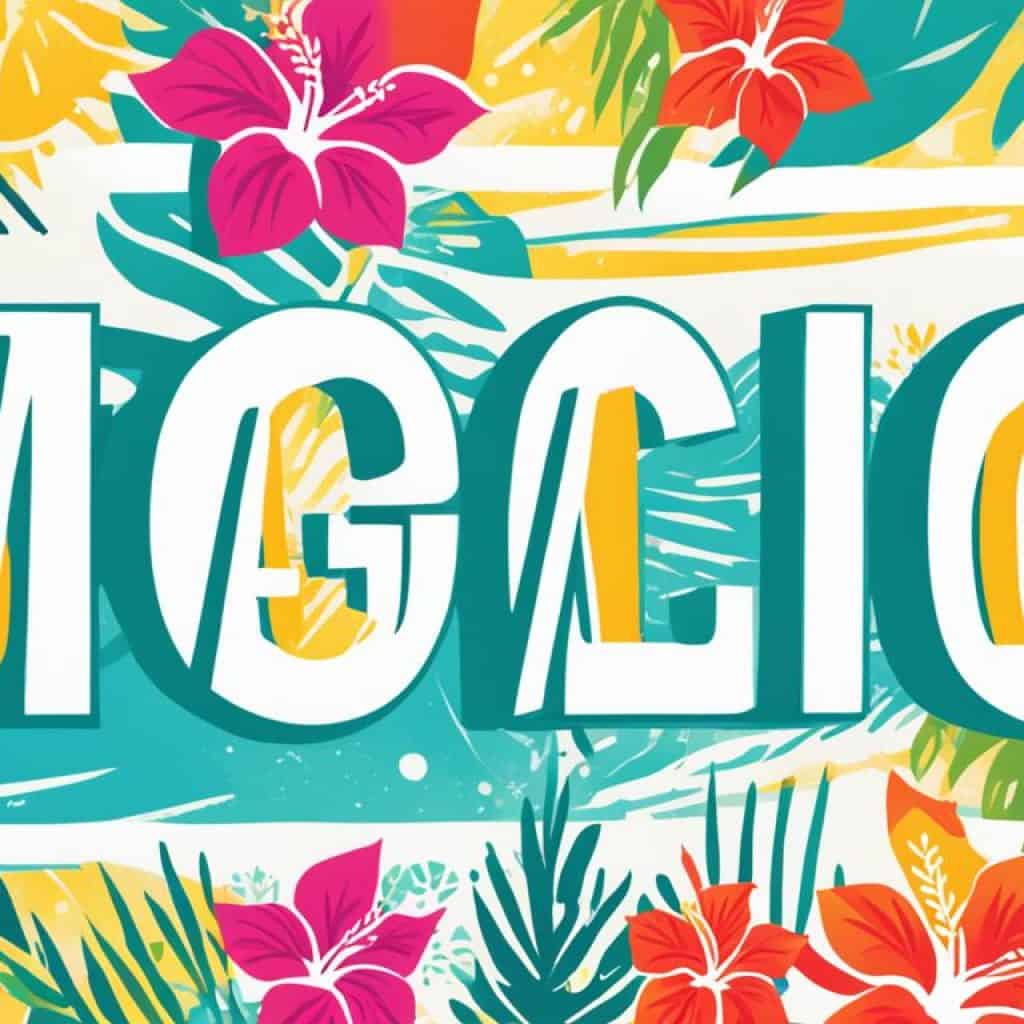Do you want to learn Tagalog, the Philippines’ national language? Maybe you aim to better connect with the Filipino community or dive deep into the Philippines’ culture. But, is learning Tagalog really as hard as it looks?
In this guide, we’ll dive into everything about learning Tagalog. We’re covering its significance, history, and grammar. You’ll get tips and resources for quick learning. Plus, insights on the cultural meanings of the language will be revealed.
Key Takeaways:
- Tagalog is the national language of the Philippines, spoken by more than half of the population.
- Learning Tagalog is vital for talking effectively with Filipinos and understanding Philippine culture more deeply.
- Although it seems tough at first, speaking Tagalog fluently is easier than you might think, even for beginners.
- Improving your vocabulary, getting your pronunciation right, and mastering grammar are key for fluency in Tagalog.
- Embracing Tagalog enriches your language skills and brings you closer to appreciating Filipino culture and its heritage.
Importance of Learning Tagalog
Learning Tagalog matters for effective communication in the Philippines. This country is full of different languages and dialects. Most people speak Tagalog, which is also the national language.
Tagalog shares many words with Spanish. So, those who know Spanish find it easier to learn. Learning it helps you chat with more Filipinos. It also lets you enjoy the Philippines’ culture more deeply.
Learning Tagalog enables you to connect with the locals on a deeper level, fostering meaningful relationships and creating memorable experiences during your time in the Philippines.
If you plan to visit, work, or live in the Philippines, knowing Tagalog is very helpful. It makes talking with locals easier. It also shows you respect and care about their culture. This makes the locals happy and welcoming.
Tagalog helps you enjoy Filipino books, music, movies, and art in their original form. It opens a door to the culture’s fine details. So, you get a genuine and rich taste of Filipino life.
By learning Tagalog, you connect more with the Filipino people, their history, and traditions. Discover the beauty of the language. Start a journey full of cultural wonders.
Benefits of Learning Tagalog
| Benefits | Explanation |
|---|---|
| Enhanced Communication | Communicate effectively with a large portion of the Filipino population. |
| Cultural Understanding | Gain a deeper appreciation of the cultural heritage of the Philippines. |
| Personal Growth | Expand your horizons and embrace the beauty of a new language and culture. |
| Authentic Experiences | Connect with locals on a deeper level and create meaningful relationships. |
History of the Tagalog Language
The Philippines has a rich history influenced by foreign occupations. This has greatly shaped the Tagalog language. The Spanish and American periods left big marks on it.
Since the 16th century, the Spanish occupation made Spanish the Philippines’ official language. Tagalog then took in many Spanish words. Now, about half of Tagalog words come from Spanish. This makes the language very unique.
The American era brought a big change, introducing English and making it official. Even so, Tagalog stayed important for Filipinos to talk to each other.
The impact of these foreign forces shows how dynamic Tagalog is. It plays a crucial role in the Philippines. Understanding its history with Spanish and English helps us know more about its culture.
The Impact of Spanish and American Occupations
The Spanish rule added many Spanish words to Tagalog. Words like “kampeon” (champion) and “grasya” (grace) show this. This mix of languages tells us about the Philippines’ past with Spain.
The American era made English a key language in the Philippines. Yet, Tagalog stays central in the nation. Its staying power shows the country’s diverse cultures and languages.
“Understanding the historical influences on the Tagalog language provides a deeper appreciation for the linguistic and cultural tapestry of the Philippines.” – Dr. Maria Santos, Linguistics Professor
Learning Tagalog: A Cultural Bridge
Learning about Tagalog’s history is key for those wanting to connect with Filipino culture. Knowing its roots and foreign influence deepens understanding. It enriches the cultural and historical context of the Philippines.
| Spanish Influence | American Influence |
|---|---|
| Approximately half of Tagalog words are derived from Spanish. | English became the official language during the American occupation. |
| Spanish loanwords enhanced the Tagalog vocabulary. | English introduced new vocabulary, blending with Tagalog usage. |
| Spanish cultural traditions continue to influence Filipino society. | English remains widely spoken and taught in schools. |
Exploring Tagalog’s history helps learners understand its evolution. It boosts intercultural understanding. And it helps people connect more with Filipinos.
Learning Tagalog Fast
Learning to speak Tagalog fluently is easier than it might seem at first. The language uses the Latin alphabet, so words are easy to pronounce. Since there are no silent letters in Tagalog, pronunciation is straightforward. You can find tools like Glossika that help you learn tagalog language fast and efficiently.
“I found learning Tagalog easy with Glossika. Their tagalog language online courses fit all levels. It’s about daily practice and repetition. This method helps learners naturally absorb the language. For anyone wanting to tagalog language lessons, Glossika is highly recommended.” – Maria, a happy user.
Many tagalog language online resources are available, making learning flexible. These online platforms have courses on vocabulary, grammar, and speaking. With these resources and regular practice, you can quickly improve in learning Tagalog fast.
Common Tagalog Phrases for Travel
Traveling to the Philippines is exciting. Knowing basic Tagalog phrases makes it better. You don’t need to use formal language to say hello.
Good pronunciation helps a lot. Practice phrases like hello, what’s your name, and other basic questions. This will boost your confidence in talking.
Here are key phrases for travelers:
Greetings:
- Kumusta? – How are you?
- Magandang umaga – Good morning
- Magandang tanghali – Good afternoon
- Magandang gabi – Good evening
Introductions:
- Ako si [Your Name] – I am [Your Name]
- Ano ang pangalan mo? – What is your name?
- Paumanhin – Excuse me
Basic Questions:
- Saan ang banyo? – Where is the bathroom?
- Magkano? – How much?
- Salamat – Thank you
These phrases are a great start. They’ll help you talk with locals and manage day-to-day tasks. Keep practicing and be open to learning more as you travel.
Traveling is not just about exploring new places, but also about immersing yourself in the culture and language of the destination.
Learning Tagalog shows you respect the Filipino culture. This makes your trip even better. So start talking and practicing with locals. Even a few phrases can create special memories.
| English | Tagalog |
|---|---|
| Hello | Kumusta |
| Thank you | Salamat |
| Excuse me | Paumanhin |
| Where is the bathroom? | Saan ang banyo? |
| How much? | Magkano? |
| Good morning | Magandang umaga |
| Good evening | Magandang gabi |
How to Learn Tagalog for Beginners
If you’re starting to learn Tagalog, many resources can help. Online courses and free guides offer basic grammar and vocabulary. You can also use flashcards, podcasts, and immerse yourself in Tagalog-speaking settings. Regular practice and learning from mistakes are crucial.
Learning Tagalog opens up connections to the Philippines’ rich culture and millions globally. Whether you’re visiting the Philippines or just love languages, here are some tips. They will kick-start your Tagalog learning journey:
1. Online Courses and Guides
The internet makes learning Tagalog easier. There are online courses and guides with lessons and interactive exercises. They match different learning preferences, including videos, audio, and reading. Check out platforms such as Duolingo, Rosetta Stone, and Transparent Language Online.
2. Flashcards and Vocabulary Builders
Flashcards help with vocabulary memory and recognition. You can make your own or use apps like Anki or Quizlet. Vocabulary builders are also good. They offer common words and phrases by theme. These tools will strengthen your Tagalog vocabulary base.
3. Podcasts and Audio Lessons
Tagalog podcasts and audio lessons enhance listening and pronunciation. Many are beginner-friendly. By listening to native speakers and practicing speech, you’ll tune your ear and speak better.
4. Immersion in Tagalog-Speaking Environments
**”Immerse yourself in Tagalog-speaking environments to practice language skills and gain real-world experience.”**
Immersion is a powerful language learning method. Try to be around Tagalog speakers or join language exchange groups. This exposes you to everyday speech, making you more fluent. Trips to the Philippines and immersion programs are great too.
5. Practice Regularly and Embrace Mistakes
Consistency boosts language learning. Practice Tagalog daily, even briefly. Work on vocabulary, structure, or pronunciation regularly. Embrace mistakes—they’re part of learning. They help you learn and improve faster.
Starting Tagalog may look tough, but proper resources, commitment, and practice pay off. Stay driven, aim for realistic goals, and celebrate your achievements. Diving into the language and culture enriches your skills and appreciation for the Philippines.
| Resources | Description |
|---|---|
| Online Courses | Platforms offering structured Tagalog courses with interactive lessons. |
| Flashcards | Physical or digital tools for memorizing vocabulary and improving word recognition. |
| Podcasts | Audio lessons and conversations for improving listening comprehension and pronunciation. |
| Language Exchange | Joining language exchange groups or finding native speakers to practice Tagalog. |
| Consistent Practice | Setting aside regular practice time and embracing mistakes as part of the learning process. |
Tagalog Grammar Made Easy
Learning Tagalog grammar can look hard at first. But with some practice, understanding the basics gets easier. When you get the hang of verb conjugation, sentence structure, and affixes, making meaningful Tagalog sentences becomes possible. This helps you speak and understand Tagalog better.
Subject-Verb-Object Word Order
Tagalog sentences usually follow the subject-verb-object order. First comes the subject, then the verb, and lastly the object. Keep this order in mind to make your sentences clear.
Verb Conjugation
Verb forms in Tagalog change depending on the sentence’s subject. This is called verb conjugation. It might seem strange to English speakers, but with practice, it gets easier. Learning different verb forms lets you express actions in Tagalog clearly.
Affixes in Tagalog
Affixes are a big deal in Tagalog. They’re attached to root words to show things like tense and mood. Knowing the various affixes helps you share more complex ideas in Tagalog.
For instance, the prefix “mag-” suggests an action will happen in the future:
Mag-luluto ako ng hapunan.
I will cook dinner.
Meanwhile, the infix “-um-” shows an action is completed:
Inuumaga pa lang, gising na ako.
I am already awake early in the morning.
These examples show how affixes change root words’ meanings in Tagalog.
Improving Your Language Skills
To get better at Tagalog grammar, practice often. Talk with native speakers, listen to Tagalog audio, and read Tagalog writings. This helps you get used to the language. Online resources and courses offer structured lessons too.
Putting in time and effort into learning Tagalog grammar builds a strong base for the language. Understanding Tagalog grammar’s details lets you communicate effectively. Dive into the language and discover what makes it unique.
Building Vocabulary in Tagalog
Building a strong vocabulary is key to learning Tagalog. Start with basic words and phrases. Then, add more specific terms to speak better.
Flashcards are a great way to learn new words. Make cards with Tagalog words and their English meanings. Review them often to improve.
Language exchange partners can also help. Talk with native Tagalog speakers who want to learn your language. This exchange helps you learn new words in real conversations.
Try labeling objects around you with their Tagalog names. This method connects words to objects. It makes it easier to remember and use them daily.
Talking with native speakers is vital. Join in Tagalog conversations. Listen and try to express yourself in Tagalog. This will help you learn new words naturally.
Example Vocabulary Table:
| Category | Tagalog Word | English Translation |
|---|---|---|
| Numbers | Isa | One |
| Dalawa | Two | |
| Tatlo | Three | |
| Colors | Pula | Red |
| Berde | Green | |
| Asul | Blue | |
| Food | Adobo | Adobo |
| Sinigang | Sour soup |
Quote:
“Language learning is a journey, and building vocabulary is a key part of that journey. By actively engaging with the language and utilizing various resources, you can expand your Tagalog vocabulary and become a more confident speaker.” – Maria Santos, Language Learning Enthusiast
To build your Tagalog vocabulary, be dedicated and practice consistently. Use flashcards, talk with language partners, and immerse yourself in daily conversations. This will boost your skills and confidence in speaking Tagalog.
Perfecting Pronunciation in Tagalog
Pronunciation is key in learning languages, and Tagalog is no different. To get better, follow certain tips and use effective strategies. This will help your speaking skills and improve communication in Tagalog.
First, practice every syllable clearly. Tagalog is a syllable-timed language. This means each syllable gets the same emphasis. Understanding the rhythm and stress makes you sound fluent.
Next, focus on vowel sounds. Tagalog has five vowels: a, e, i, o, u. Learn these sounds well. Accurate vowels make your speech clearer.
Try copying how native speakers talk. Notice how they stress words or phrases. Also, watch the rhythm of their speech. This makes your pronunciation sound more real.
“Practicing clear syllables, mastering vowel sounds, and mimicking native speakers are key to good Tagalog pronunciation.”
Remember, Tagalog is polite. Using “po” in conversations shows respect. It’s good when talking to elders or new people. This also shows you understand the culture.
Listening exercises can help too. Listen to Tagalog in conversations, music, or podcasts. This introduces you to various speech styles. It can sharpen your pronunciation skills.
Talking with native speakers is vital. Try practicing with them through exchange programs or online chats. Their feedback helps improve your pronunciation.

In summary, good Tagalog pronunciation comes from practice. Work on syllables, vowels, and copying native speech. Don’t forget polite words, listening exercises, and speaking with locals. With regular practice, you’ll speak Tagalog more confidently.
Intermediate Level Tagalog Challenges
As you improve in Tagalog, you’ll find harder parts of the language. You need to work on verb conjugation, how sentences are built, and idiomatic expressions.
To get better, focus on these tough aspects. This will help you talk more smoothly and express yourself better.
A good way to improve is being around people who speak Tagalog. When you’re with native speakers, you learn how they really talk. This helps you understand the language better.
Watching Filipino movies or TV shows helps too. This lets you hear real Tagalog and learn about the culture. It makes your language skills better.
Reading Tagalog books also helps grow your vocabulary. It helps you understand idiomatic expressions and cultural references more.
Getting better at intermediate Tagalog is a journey. See these challenges as chances to learn more. Dive into the Filipino language and culture.
Broaden Your Horizons with Tagalog
Explore Tagalog and Filipino culture through these ways:
- Watch Filipino movies and TV shows
- Read Tagalog literature and poetry
- Engage in conversations with native Tagalog speakers
- Participate in cultural events and celebrations
By getting involved with the language and culture, you’ll improve your Tagalog. You’ll also appreciate Filipino people and their heritage more.
| Intermediate Level Tagalog Challenges | Tips for Overcoming Challenges |
|---|---|
| Complex verb conjugation | Practice conjugating verbs in various tenses and moods. Use verb charts as references. |
| Sentence structures | Study different sentence patterns and practice constructing sentences using these patterns. |
| Idiomatic expressions | Learn common idiomatic expressions and their meanings. Use them in daily conversations to enhance your fluency. |
By working on these challenges and trying new things, you’ll keep getting better at Tagalog.
Mastering Tagalog Fluency
To master Tagalog, consistent work and commitment are vital. It’s important to talk as much as possible with native speakers. This improves your fluency and conversation skills.
Daily chats, listening to native talk, and growing your vocabulary are key. They help you reach proficiency. Then, you can speak well and express yourself in Tagalog.
Immersing yourself in a Tagalog-speaking setting is a great strategy. Being around native speakers regularly helps you pick up the language’s nuances. It also boosts your confidence.
Talking with native speakers is crucial for fluency. It lets you apply what you’ve learned and understand common sayings. Plus, you’ll learn slang not covered in classes.
Listening to native speakers helps too. Make it a habit to listen to Tagalog conversations, podcasts, or audio materials. This trains your ear and improves pronunciation and intonation.
Expanding your vocabulary is essential. Learning new words and phrases lets you communicate more clearly and effectively.
To boost your fluency, use online resources and take Tagalog lessons. These offer structured help and extra practice. They also let you meet other learners.
Fluency takes time and hard work. Keep practicing and take chances to talk with native speakers and dive into the language. With effort and dedication, you’ll fluently speak Tagalog and connect confidently with others.
So, if you’re visiting the Philippines, connecting with Filipino loved ones, or love learning languages, speaking Tagalog well opens new opportunities and connections.
Cultural Immersion in Tagalog
Learning Tagalog is more than just language skills. It’s about diving deep into Filipino culture. This brings a closer connection to the country and its people. Exploring traditional Filipino food, music, literature, and customs offers rich cultural insights. These enhance your language learning journey.
Filipino cuisine is a world of flavors and history. You’ll love dishes like adobo and sinigang. Snacks such as halo-halo and bibingka tell stories of culinary tradition.
Music is a big part of Filipino culture. When you listen to Tagalog songs, you’ll hear beautiful melodies and emotional lyrics. There’s everything from pop hits to traditional folk tunes. The Philippines has a diverse music scene to discover.
Filipino literature is filled with cultural insights. Authors like Jose Rizal and F. Sionil Jose help you understand local history and values. Discover the Filipino culture through their stories.
Engaging in Filipino customs connects you to their way of life. Celebrate festivals like Sinulog and Pahiyas. Experiences like pagmamano show respect in Filipino culture. These customs deepen your engagement with Filipino life.
“Language and culture are deeply intertwined. By immersing yourself in Filipino culture, you enhance language skills and build understanding connections with locals.”
Immersing in Filipino culture improves your language skills and appreciation for the Philippines. You’ll communicate more effectively and authentically with Tagalog speakers. This fosters a greater sense of connection and belonging.
| Ways to Immerse Yourself in Filipino Culture | Benefits for Language Learning |
|---|---|
| Try traditional Filipino dishes | Expand vocabulary related to food and dining |
| Listen to Tagalog songs and music | Improve pronunciation and comprehension |
| Read Filipino literature | Gain cultural insights and vocabulary |
| Participate in Filipino customs and traditions | Deepen understanding of cultural nuances |
Unlocking Cultural Gems with Tagalog
Cultural immersion is key in language learning. By exploring Filipino culture through Tagalog, you discover the country’s way of life. This not only enriches your language abilities but also enhances cultural appreciation. It opens doors to new connections and experiences.
Online Resources for Learning Tagalog
Online courses and resources are great for learning Tagalog. They help both beginners and those looking to improve their skills. Different platforms provide courses for all levels.
Many universities and websites offer Tagalog courses. These cover grammar, vocabulary, and how to pronounce words correctly. You can learn at your own pace, fitting study time into your schedule.
- Language Tagalog Online: This platform has a variety of courses in Tagalog. Whether you’re starting out or advancing, they’ve got you covered. They focus on everything from basic conversation to complex grammar.
- Tagalog Language Course by Filipino Institute: The Filipino Institute has an online course for Tagalog. It focuses on grammar, vocabulary, and listening exercises. You also get to practice speaking.
- Learn Tagalog: A website offering free learning materials for all levels. It has lessons on grammar, vocabulary, and pronunciation. Plus, interactive quizzes make learning fun.
Enrolling in an online Tagalog course offers structured lessons and interactive activities. You get to learn from native speakers, which is a huge plus. Courses usually include listening practices, vocabulary exercises, and grammar lessons.
Mastering Tagalog takes consistency and practice. Dedicate time to study regularly. Try to immerse yourself in the language as much as you can. Talking with native speakers, listening to Tagalog, and watching Tagalog shows will help a lot.
Don’t wait to start learning Tagalog online. Begin your journey to fluency today with these resources. It promises to be rewarding.
Discovering Tagalog Through Media
Diving into Tagalog media is a cool and effective way to get better at the language and understand Filipino culture more. Watching Tagalog movies, listening to music, and checking out TV shows can improve your vocabulary and how you speak. It’s a fun method to learn.
Listening to Tagalog Songs
Enjoying Tagalog songs helps you dive into the language. Songs teach you about pronunciation, the flow of words, and rhythm. Start with famous Filipino singers like Sarah Geronimo, Bamboo, and Moira Dela Torre. You’ll find their music on Spotify or YouTube.
Watching Filipino Movies and TV Shows
Watching Filipino movies and TV shows with subtitles is great for learning Tagalog. It shows you how people talk, special phrases, and parts of the culture. Movies like “Heneral Luna,” “On the Job,” and “Four Sisters and a Wedding” are top picks. For TV, try “Ang Probinsyano,” “It’s Showtime,” and “Maalaala Mo Kaya.”
Engaging with Native Speakers Online
Connecting with native Tagalog speakers online is super helpful. It lets you chat, ask questions, and get feedback. This way, you practice speaking and listening. Check out iTalki, HelloTalk, and Tandem for places to start.
| Media | Benefits |
|---|---|
| Tagalog Songs | Improves pronunciation, rhythm, and vocabulary |
| Filipino Movies and TV Shows | Enhances comprehension, cultural understanding, and colloquial expressions |
| Engaging with Native Speakers Online | Provides interactive practice with feedback from native speakers |
Getting into Tagalog music, movies, and chatting online makes learning fun and active. Being around genuine content and talking with native speakers speeds up your learning. So, put on your headphones, pick a Filipino movie, and dive into the wonderful world of Tagalog media!

Conclusion
Learning Tagalog is rewarding and enriching. It brings many benefits. Immersing yourself in the language opens up opportunities for effective communication.
Mastering Tagalog helps you speak fluently. It also deepens your appreciation of the Philippines’ rich culture.
To get fluent, practice consistently and stay dedicated. Use online courses and platforms to improve your skills. Embrace the beauty of Tagalog and dive into Filipino culture. This way, you won’t just learn a language. You’ll also understand the Filipino way of life.
Start this exciting Tagalog learning journey. As you move forward, you’ll make new connections and grow personally. Broaden your horizons. Discover the beauty and power of Tagalog and join the global Tagalog-speaking community.







Add comment